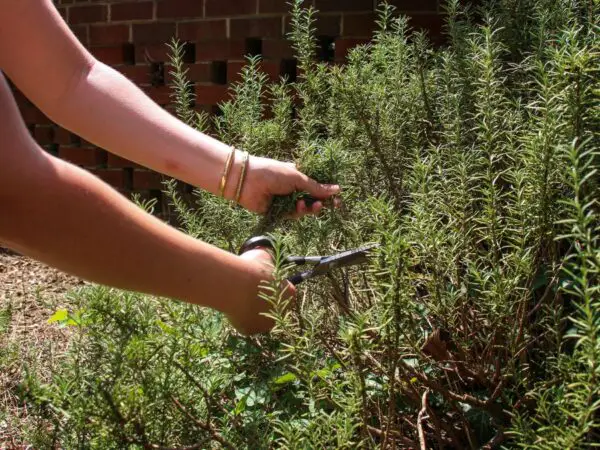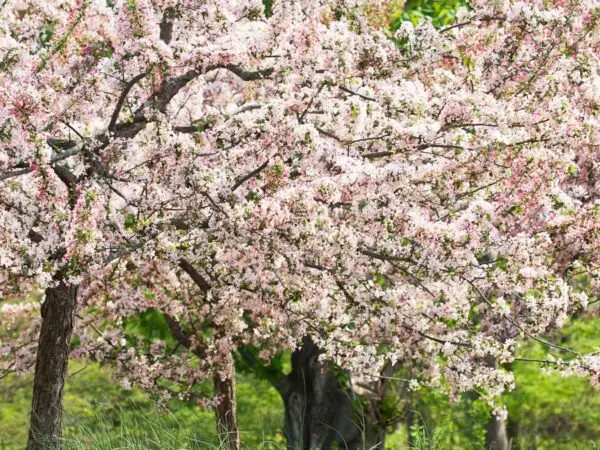Ever wondered how you could effortlessly propagate poplar trees from cuttings? Dive into the world of tree propagation with our simple guide. Discover the secrets to successfully starting your very own poplar trees without breaking a sweat. Ready to unlock the mysteries of plant propagation and watch your cuttings grow into majestic trees? Let's get started on this green-fingered journey together!
Key Takeaways
- Start Your Own Poplar Trees: You can easily propagate poplar trees from cuttings by following simple techniques.
- Select Healthy Cuttings: Choose young, healthy cuttings from the current season's growth for successful propagation.
- Provide Proper Growing Conditions: Ensure adequate sunlight, water, and well-draining soil to support the growth of your propagated poplar trees.
- Regular Maintenance is Key: Regularly monitor and care for your poplar trees to promote healthy growth and development.
- Be Prepared for Challenges: Anticipate common challenges like pests or diseases and take proactive measures to address them.
- Learn from Success Stories: Gain insights from successful poplar tree propagation stories to refine your own techniques and practices.
Understanding Poplar Trees
Types
Poplar trees, such as the Eastern Cottonwood, Lombardy Poplar, and Hybrid Poplars, vary in growth rates and characteristics. Selecting the appropriate type of poplar tree is crucial for successful propagation. For instance, Hybrid Poplars are known for their rapid growth compared to other types.
Different poplar varieties have distinct features that can impact their growth and development. While some types may grow tall quickly like the Eastern Cottonwood, others like the Lombardy Poplar are recognized for their slender columnar shape. Understanding these differences helps in choosing the right kind of poplar tree based on specific requirements.
Growth Habits
Poplar trees are popular due to their fast growth rate which makes them an attractive option for individuals seeking quick results in landscaping or forestry projects. Their robust root system, including hybrid poplar trees, not only aids in stabilizing soil but also plays a role in preventing erosion issues commonly found on slopes or riverbanks.
Knowing about the rapid expansion of poplars and their water requirements is essential when planning maintenance tasks as they may require regular pruning sessions to manage their vigorous growth effectively. By understanding how rapidly they can grow under favorable conditions, one can anticipate and prepare for potential challenges that come with maintaining these trees.
Climate Needs
Poplar trees thrive best in temperate climates characterized by moderate winters and warm summers; however, they exhibit adaptability to various temperature ranges while showing a preference for regions with moderate rainfall levels. Being aware of these climate preferences is vital when considering planting locations for poplar species.
Understanding the climatic requirements of different types of poplars ensures that they receive optimal growing conditions necessary for healthy development and sustained vitality over time.
Benefits of Propagation
Cost Efficiency
Starting poplar trees from cuttings is a cost-effective way to grow new trees. Compared to planting seeds or buying saplings, using cuttings saves time and money. For budget-conscious gardeners, this method can be highly beneficial in terms of cost efficiency.
Utilizing cuttings for propagating poplar trees results in faster growth compared to other methods. Cuttings come with established root systems, allowing them to establish themselves more rapidly. This quicker growth rate achieved through cuttings leads to earlier results.
Faster Growth
One significant advantage of starting poplar trees from cuttings is the speed at which they grow compared to other propagation methods. With pre-developed root systems, these cuttings can establish themselves more quickly than seeds or saplings would.
Propagating poplar trees from cuttings ensures genetic consistency with the parent tree's desirable traits like disease resistance or specific characteristics. By maintaining genetic uniformity through cutting propagation, gardeners can preserve desired qualities effectively.
Choosing Cuttings
When starting poplar trees from cuttings, timing is crucial. Late spring or early summer, when the trees are actively growing, is the best time. This period boosts successful rooting and establishment of the cuttings. Selecting this optimal time significantly enhances the chances of your poplar tree cuttings taking root successfully.
Choosing healthy, disease-free cuttings is paramount for successful propagation. Opt for cuttings that measure between 6 to 12 inches in length and have multiple nodes along their stems. When you select these prime candidates for cutting, you increase the likelihood of robust root development in your poplar tree propagation efforts.
Propagation Techniques
Preparation Steps
Using a rooting hormone can significantly boost the chances of successful root development. By dipping the base of the cutting in a rooting hormone powder or solution before planting, you enhance its ability to grow roots efficiently. These treatments play a vital role in improving the success rate when starting poplar trees from cuttings.
Soil selection is another critical aspect of preparing for propagating poplar trees. Opt for well-draining soils with good fertility, such as loamy or sandy soils that retain moisture without getting waterlogged. Choosing the right soil type is crucial for ensuring healthy growth and development of poplar trees.
- Pros:
- Enhances root development
- Improves success rate
- Cons:
- Additional step required
- Cost associated with purchasing rooting hormone
Planting Process
To ensure proper growth, understanding depth and spacing requirements is essential when planting poplar tree cuttings. Plant them at a depth equal to about two-thirds their length, making sure at least one node is below the soil surface. Space out the cuttings adequately, around 3 to 5 feet apart, allowing ample room for each cutting's development.
Meeting watering needs is crucial during the initial stages after planting poplar tree cuttings. Regular watering, especially during establishment phases, helps maintain proper hydration levels for healthy root growth. Providing deep and thorough watering sessions ensures that your newly propagated poplar trees thrive.
- Depth and Spacing Guidelines:
- Plant at two-thirds cutting length depth.
- Space cuttings 3 to 5 feet apart.
- Watering Instructions:
- Water regularly post-planting.
- Provide deep hydration sessions.
Growing Conditions
Sunlight Requirements
Poplar trees need full sun exposure, a minimum of six hours daily. The planting area must receive enough sunlight for the trees to thrive. Adequate sunlight is crucial for their successful growth and development.
To ensure healthy root development, water poplar tree cuttings right after planting and maintain regular moisture until they establish themselves. Adjust the watering frequency based on weather conditions to keep the soil moist but not waterlogged. A proper watering schedule is key to promoting strong root systems in poplar trees.
Soil Type
Poplar trees are versatileAdapting well to clay, loam, and sandy soils. However, they prefer well-draining soils with good fertility levels for optimal growth. Understanding the ideal soil type for poplar trees plays a significant role in their successful establishment.
Care and Maintenance
Pruning Techniques
Prune poplar trees when dormant to promote healthy growth. Remove dead or diseased branches for a balanced canopy structure. Proper pruning enhances the overall health and appearance of poplar trees. By shaping the tree strategically, you support its development and longevity.
To maintain your poplar trees effectively, it is crucial to fertilize them properly. Apply a balanced fertilizer in early spring following the manufacturer's instructions precisely. This practice ensures that your poplar trees receive essential nutrients for robust growth. Adhering to a consistent fertilization schedule fosters their healthy development over time.
Pest Management
Regularly monitor your poplar trees for common pests like aphids, caterpillars, or borers. Swiftly address any pest issues using organic or chemical control methods as needed to prevent infestations from causing harm. Implementing effective pest management practices safeguards your poplar trees from potential damage caused by these harmful insects.
Common Challenges
Disease Prevention
When starting poplar trees from cuttings, disease prevention is crucial. Opt for disease-resistant varieties to combat common issues like leaf rust or canker. Sanitation practices are vital; avoid overwatering as it reduces disease risks significantly. Prioritizing these measures ensures the long-term health of your poplar trees.
Proper sanitation and selecting resistant varieties help prevent diseases like leaf rust or canker. Overwatering should be avoided when starting poplar trees from cuttings to reduce disease risks.
Weather Impact
Extreme weather conditions pose a threat to the growth and stability of poplar trees. Strong winds or heavy rain can negatively affect their development. To mitigate these risks, consider the potential impact of weather when choosing a planting site. Providing adequate support if needed helps ensure the well-being of your poplar trees in varying weather conditions.
Poplar tree growth and stability may be affected by extreme weather conditions such as strong winds. Selecting an appropriate planting site considering potential weather impacts is essential for healthy poplar tree growth.
Commercial Production Insights
Scale-Up Tips
When propagating poplar trees from cuttings on a larger scale, using a misting system or greenhouse can provide the ideal conditions for successful growth. These setups help maintain humidity levels essential for root development. Having a systematic approach in place is crucial to efficiently handle a higher volume of cuttings. By organizing your process and workspace effectively, you can ensure each cutting receives the necessary care and attention.
Implementing these scale-up tips not only improves efficiency but also streamlines the entire propagation process. With optimized conditions and organized procedures, you can increase the success rate of root formation in poplar tree cuttings significantly. This streamlined approach allows you to propagate a larger number of trees within the same timeframe while maintaining quality standards.
Market Trends
Poplar trees have gained popularity in landscaping and commercial sectors due to their rapid growth and versatility. Staying informed about current market trends regarding poplar tree demand is crucial when considering large-scale propagation efforts. Understanding these trends enables you to make strategic decisions that align with market demands, ensuring your propagated poplar trees meet consumer needs effectively.
Success Stories
Studying successful cases of starting poplar trees from cuttings can provide valuable insights into effective techniques. For example, learning how individuals have overcome challenges like root development issues or disease prevention can enhance your own propagation methods. By exploring various case studies, you can adopt proven strategies to improve the success rate of your tree propagation efforts.
Examining real-life experiences allows you to understand the nuances of starting poplar trees from cuttings better. Some success stories might highlight the significance of proper soil moisture levels or the ideal temperature for optimal growth. By delving into these narratives, you gain practical knowledge that can be applied to your own tree propagation endeavors.
Growth Milestones
Monitoring key growth milestones in propagated poplar trees is crucial for assessing their overall health and progress. Tracking stages such as root development, leaf emergence, and height increase enables you to gauge the success of your cutting propagation project accurately. Recognizing these milestones helps you make informed decisions regarding care and maintenance routines for the growing trees.
Observing growth milestones provides a clear indication of whether your efforts in starting poplar trees from cuttings are yielding positive results. For instance, significant advancements in root establishment signify a healthy and robust plant that is on track for successful maturation. By being attentive to these markers, you can adjust your cultivation practices accordingly to ensure continued growth and vitality in your propagated poplar trees.
Now that you're equipped with the knowledge on how to start poplar trees from cuttings, it's time to roll up your sleeves and get your hands dirty. Remember, success in propagation often hinges on patience and attention to detail. By selecting the right cuttings, mastering the propagation techniques, and providing optimal growing conditions, you're well on your way to nurturing flourishing poplar trees.
So, gather your tools, pick your cuttings wisely, and dive into this rewarding journey of propagation. With dedication and a sprinkle of green-thumb magic, you'll soon witness the fruits of your labor blooming into majestic poplar trees. Happy planting!
Frequently Asked Questions
How do I understand the characteristics of Poplar Trees before propagation?
To understand Poplar Trees better, research their growth habits, preferred climate conditions, and potential challenges. Consider factors like soil type and sunlight requirements to ensure successful propagation.
What are the benefits of propagating Poplar Trees from cuttings?
Propagating Poplar Trees from cuttings allows you to replicate desirable traits, such as fast growth and disease resistance. It's a cost-effective method that ensures genetic consistency in your tree population.
How do I choose the best cuttings for propagating Poplar Trees?
Select healthy cuttings with no signs of disease or damage. Opt for semi-hardwood or hardwood cuttings taken during the dormant season for better success rates in rooting and establishing new trees.
What propagation techniques work best for starting Poplar Trees from cuttings?
Popular techniques include using a rooting hormone on prepared cuttings and placing them in a well-draining growing medium. Utilize misting systems or humidity domes to maintain moisture levels until roots develop.
What are some common challenges faced when propagating Poplar Trees from cuttings?
Common challenges include rotting due to excessive moisture, failure to root properly, or susceptibility to pests and diseases. Proper sanitation practices, monitoring environmental conditions closely, and timely interventions can help overcome these issues.
Image Source: Paid image from CANVA




